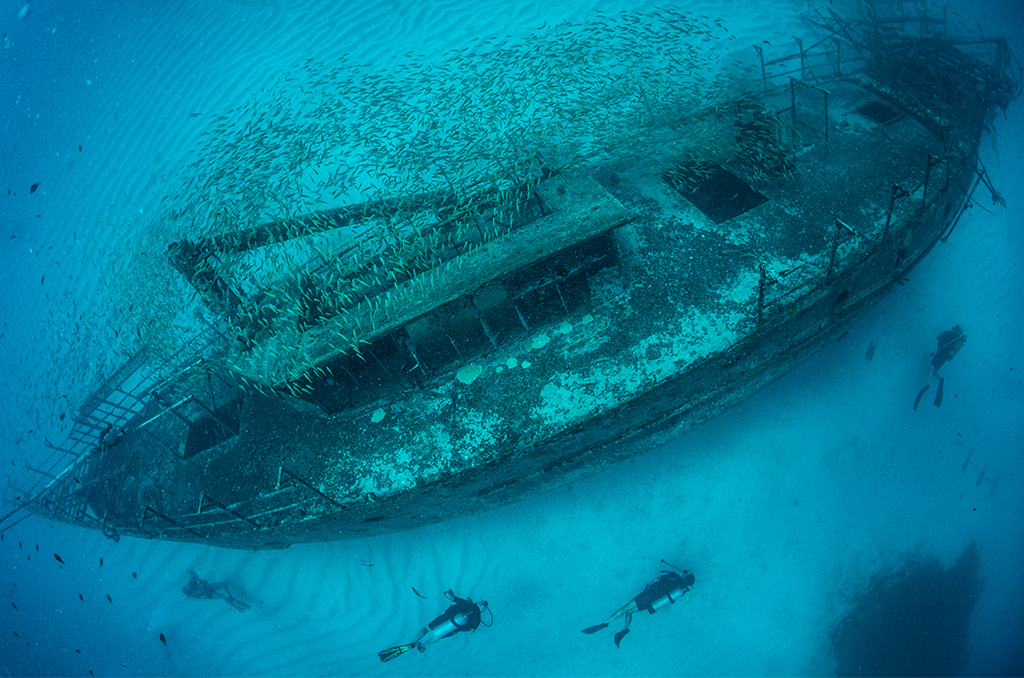Shipwreck — Courtesy: Shutterstock — timsimages.uk
A 19th-century whaler shipwreck has been found in a deep-sea dive off of Florida’s coast.
Video showing a ballast, anchor, bottles, and a stove resting on the ocean floor was released by the National Oceanic and Atmospheric Administration (NOAA) on February 25.
The rusted iron anchor can be seen resting on a mound thought to trace the shipwreck’s outline. A second anchor that broke into two pieces was also filmed at the scene of the wreckage.
“That’s amazing. I’ve never seen an anchor like that snapped in half,” a NOAA crew member commenting live on the video said.
“That’s what we call a bad day at sea,” another said.
The footage was taken as part of an NOAA expedition to the Gulf of Mexico and the western Straits of Florida. The expedition’s purpose is to test out its mapping systems and remote operating vehicles ahead of its ocean exploration projects scheduled for later in 2022.
Discovering a 200-year-old whaling boat shipwreck was not part of the mission.
The hunting of whales was a massive commercial industry during the early 19th and 18th centuries.
Whales were hunted for their blubber, meat, oil in their bodies, which had an array of uses in the period, from soap to lamp oil. Ambergris, a waxy substance found in the bodies of sperm whales that is used to make perfumes, was also purchased by whalers.
The practice sent several species of whales to the brink of extinction before it was banned in several countries. The United States banned the practice in 1972 under the Marine Mammal Protection Act.
The NOAA crew identified the wreck as dating sometime between 1800 and 1840. The crew said most of the wooden structure of the 19th-century ship had already disintegrated after so much time underwater.
Whaling was an extremely dangerous yet lucrative business for the sailors involved. Whaling ships and the small skiffs used to chase animals could easily get broken up and sunken, or “stove,” during hunts. Sperm whales also learned to attack whalers by ramming into their boats with great force.
The whaling industry in the U.S. was based in New England but eventually expanded to include Florida’s coasts, where right whales were once bountiful. They were called “right” whales by whalers because of their abundance of oil and slow speed, plus the fact they floated once they were killed, making them perfect targets.
The practice disappeared rapidly in the U.S. after the commercialization of oil, which was first successfully drilled in 1859. Whaling is still legal in many countries including Norway, Japan, and Iceland, although Iceland has announced it will be banning the practice in 2024.
Many species of whales remain threatened or are recovering from the widespread whaling of the 18th and early 19th centuries.
The NOAA ROV and Mapping Shakedown mission is running dives in the region through March 3.
Make sure you are staying up-to-date with the latest and most important Florida news with Florida Insider. Whether you are interested in business, education, government, history, sports, real estate, nature, weather, or travel: we have something for everyone. Follow along for the best stories in the Sunshine State.

Born and raised in South Florida, Krystal is a recent graduate from the University of Miami with professional writing experience at the collegiate and national news outlet levels. She’s a foodie who loves all things travel, the beach, & visiting new places throughout Florida.

